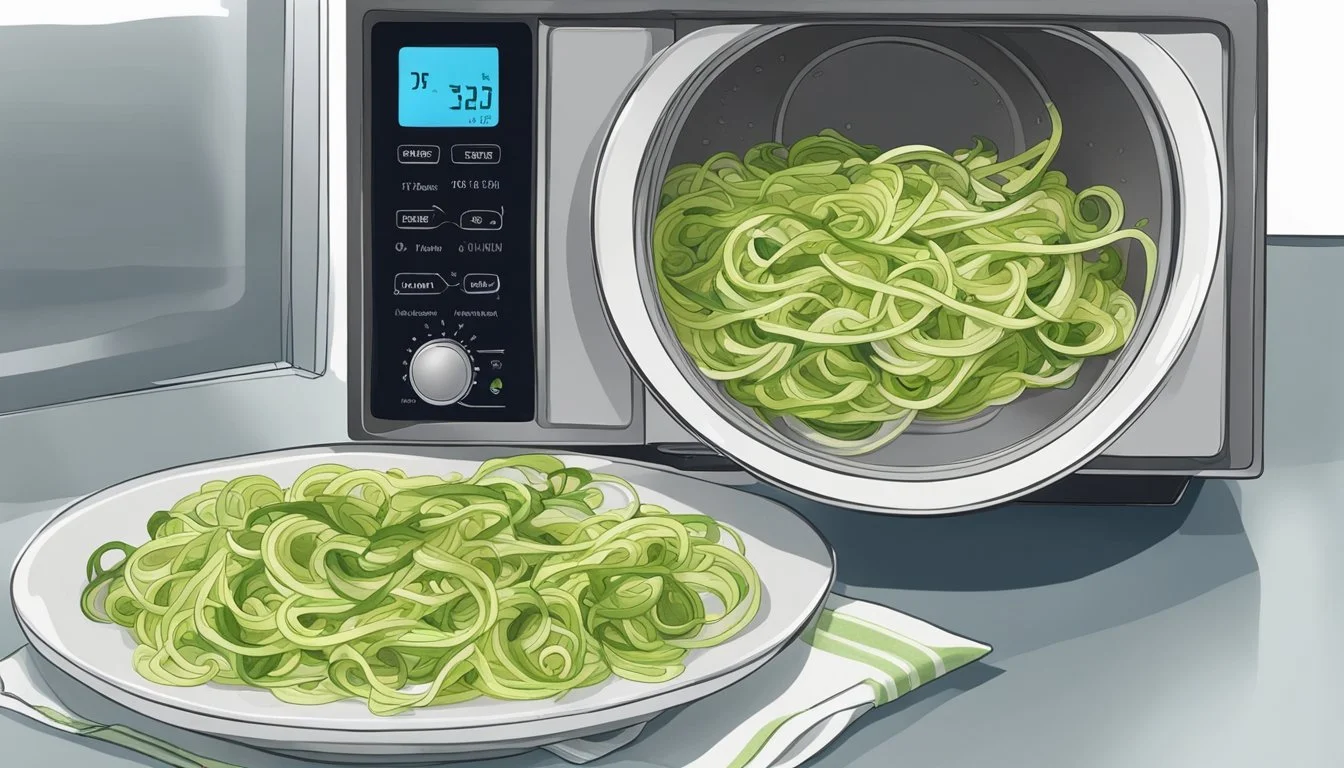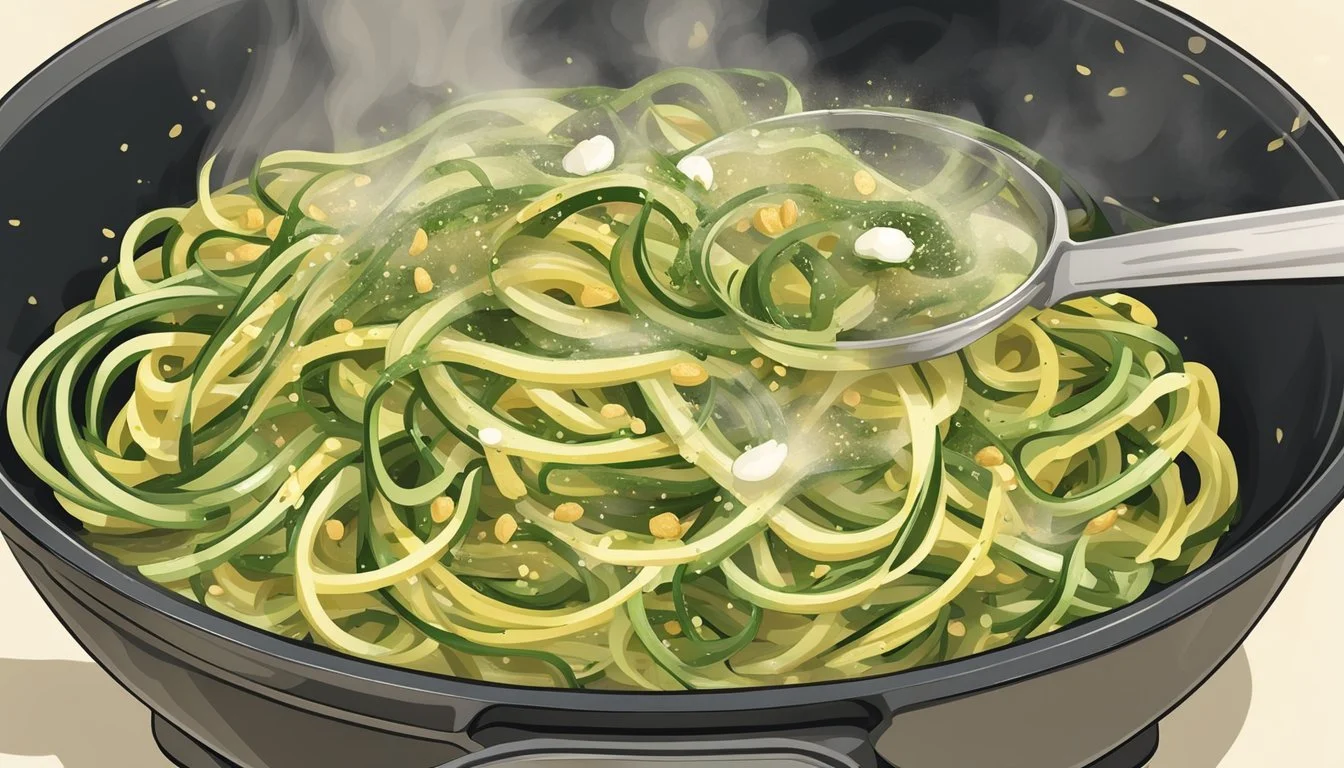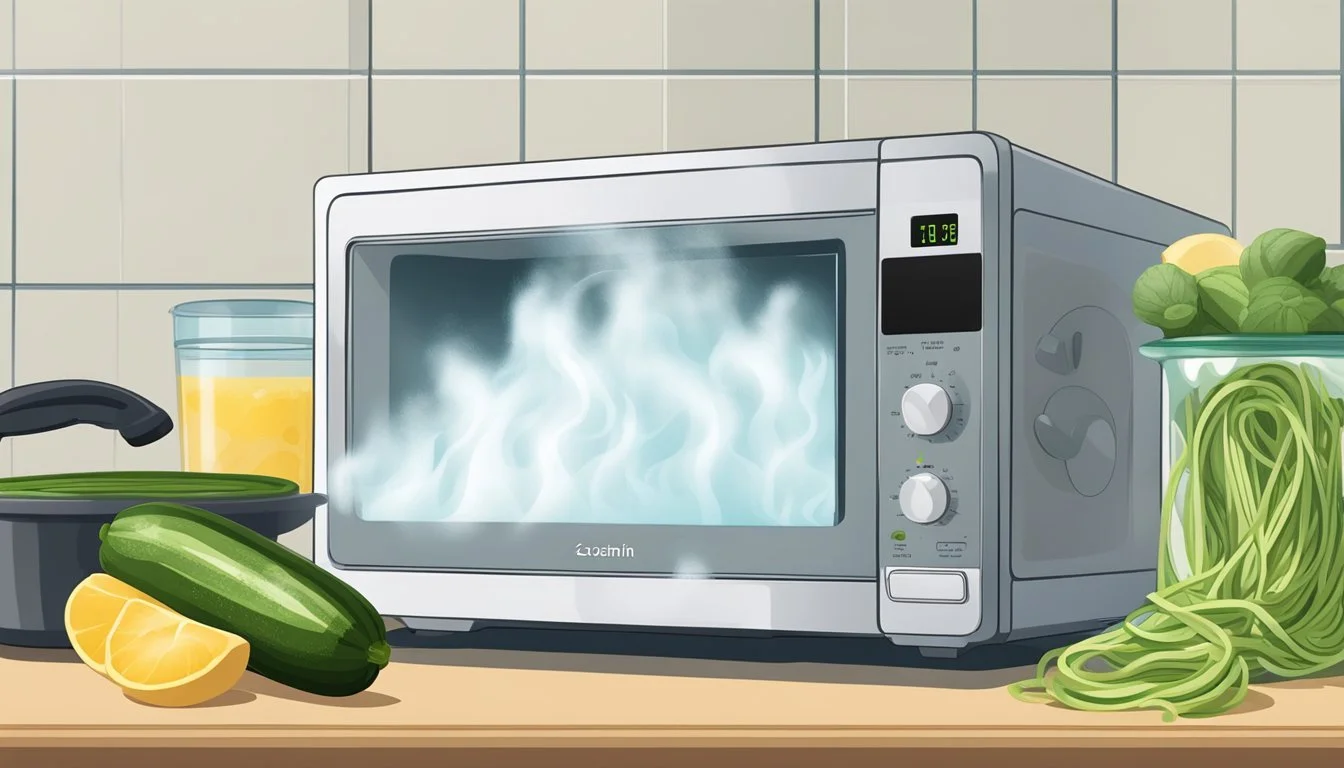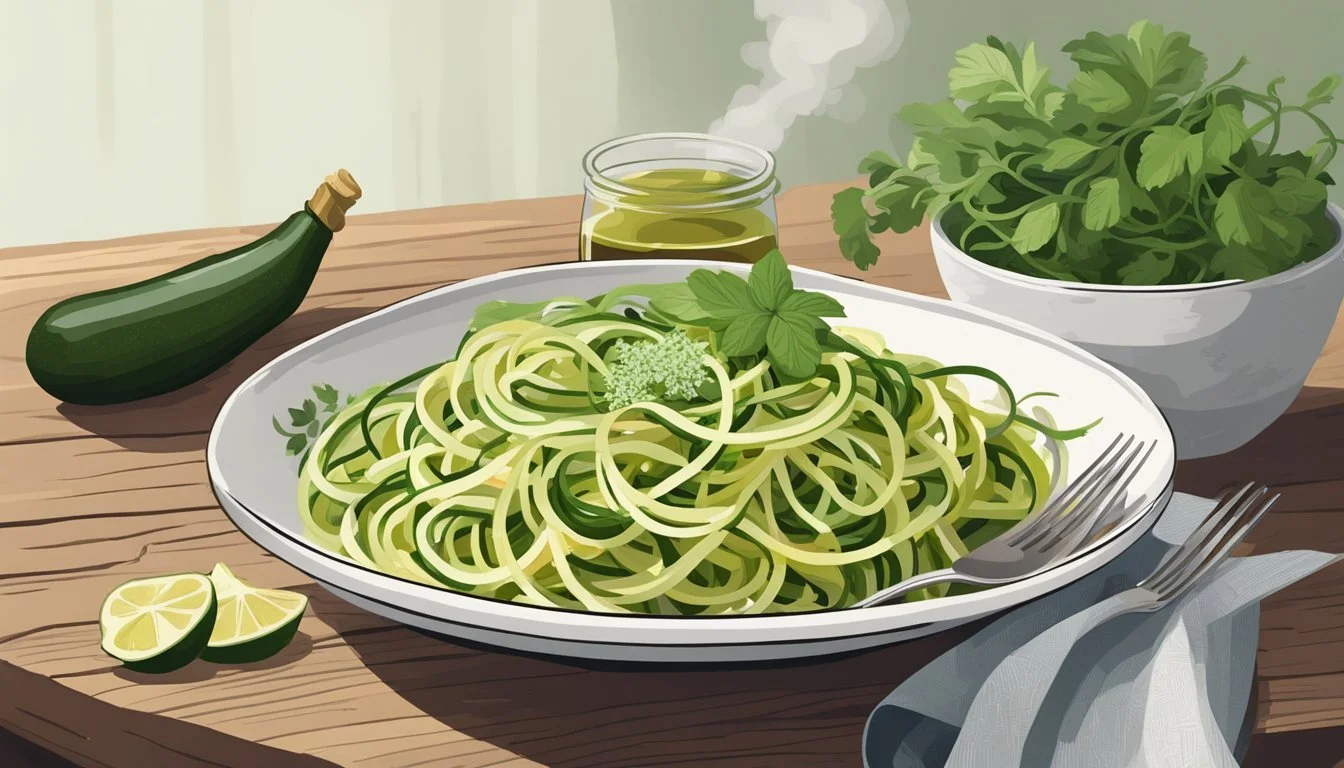How to Reheat Gluten-Free Zucchini Noodles
Quick and Easy Methods
Reheating gluten-free zucchini noodles to maintain their perfect texture is a challenge many face. These light and nutritious noodles, often referred to as zoodles, provide a fantastic gluten-free alternative to traditional pasta. To ensure they don't turn soggy, the best method is to flash-freeze them before storing and then gently reheat on the stove. This preserves their crunch and prevents them from becoming a mushy mess.
For those who prefer using an oven, it's essential to remember that a slow and low approach works wonders. Preheat the oven to 350 degrees Fahrenheit and place the zoodles in an oven-safe dish, covered with foil. Bake for about 10 minutes until they are evenly warmed through. This method helps retain both flavor and texture effectively, making it indispensable for any gluten-free recipe enthusiast.
If you love experimenting in the kitchen, remember that adding the sauce just before serving preserves the noodles' integrity. Cook the zoodles and set them aside while you prepare the sauce separately. Pour the sauce over the zoodles right before serving to keep them crisp and delicious.
Understanding Zucchini Noodles
Zucchini noodles, commonly called zoodles, offer a gluten-free alternative to traditional pasta. They are versatile and pack a nutritious punch while being low in calories.
Benefits of Gluten-Free Zoodles
Zoodles are an excellent choice for those seeking a gluten-free diet. Made from zucchini, these noodles provide a low-calorie and low-carb alternative to wheat pasta.
Zucchini is rich in vitamins and minerals, especially vitamin A, which supports vision and immunity. The high water content and fiber of zucchini promote digestion. Plus, zoodles are also an excellent option for those on a raw diet.
Combining the health benefits of vegetables with the satisfaction of noodles, zoodles can be used in a wide range of dishes, maintaining nutritional integrity while mimicking the texture of traditional pasta.
Selection and Preparation of Zucchini
Choosing the right zucchini is essential for the best zoodles. Look for firm, medium-sized zucchini with shiny skin. Avoid those with nicks, bruises, or soft spots.
To prepare, wash the zucchini thoroughly and pat dry. Using a spiralizer or handheld spiralizer, create long noodle strands. A julienne peeler can also be used for similar results.
It’s crucial not to peel the zucchini, as the skin contains essential nutrients. After spiralizing, place the zoodles on a paper towel to remove excess moisture. This step helps avoid soggy noodles when cooking or reheating. Proper preparation ensures that your zoodles have the right texture and nutrition.
Pre-Reheating Preparation
Proper pre-reheating preparation ensures the gluten-free zucchini noodles retain their texture and flavor. Consider storage and reheating methods to prevent noodles from becoming too watery or losing their quality.
Proper Storage Techniques
Storing gluten-free zucchini noodles correctly is crucial to maintain their quality. After cooking, they should be well-drained to remove excess moisture. Place them in an airtight container to prevent any exposure to air, which can cause the noodles to become soggy. Lining the container with a paper towel helps to absorb any residual moisture.
Store the container in the fridge and use the noodles within 2-3 days for best results. Freezing zucchini noodles is an option, but it can affect their texture. If freezing, place the noodles in a freezer-safe container or zip-lock bag, removing as much air as possible. This helps to prevent freezer burn and maintain the noodles' integrity.
Preparation for Reheating
Before reheating, ensure the zucchini noodles are well-prepped. If they were frozen, allow them to thaw in the fridge overnight. Avoid microwaving directly from frozen as it can make them watery. If stored in the fridge, check for any excess moisture and drain if necessary.
For best results, pat the noodles dry with a paper towel. This ensures they do not become overly watery when reheated. If desired, add a small amount of butter or olive oil to enhance the flavor and prevent sticking. Now, they are ready to be reheated using your preferred method.
Reheating Methods for Zoodles
Reheating gluten-free zucchini noodles, or zoodles, effectively maintains their taste and texture. Various methods such as using the stove top, microwave, and alternative techniques help ensure that zoodles remain tender and avoid becoming mushy.
Using the Stove Top
The stove top method involves sautéing zoodles to retain their crisp texture. Start by heating a skillet over medium heat and adding a tablespoon of olive oil or butter.
Once the oil is hot, add the zoodles. Stir frequently for about 1-2 minutes until the noodles are warm. Avoid overcooking to prevent the noodles from getting mushy. For added flavor, sprinkle with salt, pepper, and other seasonings like minced garlic or fresh herbs during cooking.
Microwave Method
Microwaving is a quick and convenient way to reheat zoodles. Place the zoodles in a microwave-safe bowl and cover them with a microwave-safe lid or plastic wrap to retain moisture.
Microwave the zoodles on high for 1-2 minutes, stirring halfway through. Be careful not to overcook, as this can make the noodles too soft. Use a colander to drain any excess moisture if necessary. This method is ideal for those in a hurry.
Alternative Reheating Strategies
For a different approach, consider baking zoodles in the oven. Preheat the oven to 350 degrees Fahrenheit and spread the zoodles on an oven-safe tray or dish. Cover with aluminum foil and bake for 10-20 minutes.
An air fryer can also be used to reheat zoodles. Place the noodles in the air fryer basket and cook at 350 degrees Fahrenheit for 3-5 minutes. These alternative methods provide even heating and can help achieve a tender yet crispy texture without overcooking.
By exploring different reheating techniques, one can find the most suitable method to enjoy perfectly warmed and delicious zoodles.
Enhancing Flavor Post-Reheating
To elevate the taste of reheated gluten-free zucchini noodles, focus on seasoning and sauces, as well as adding complementary proteins and vegetables.
Seasoning and Sauces
Enhancing flavors with seasoning and sauces can make a significant difference. Garlic, minced or powder, provides a robust aroma. Olive oil adds a rich texture and binds the flavors together. For a creamy touch, add a small amount of butter.
Simple salt and pepper balance the dish's taste. Incorporate fresh herbs like basil or parsley for an aromatic finish. Grated Parmesan cheese or a sprinkle of tangy lemon zest can enhance the dish's depth.
For those who prefer a richer flavor profile, a spoonful of pesto or a dollop of your favorite sauce, such as marinara or Alfredo, can make the zucchini noodles truly delicious. Drizzle a bit of olive oil at the end to bring it all together effortlessly.
Complementing with Proteins and Vegetables
Incorporating proteins and additional vegetables can add both nutrition and flavor. Grilled chicken or shrimp work well as protein-rich toppings. For a vegetarian option, consider adding roasted squash, carrots, or other vegetables.
Sautéed vegetables like bell peppers or mushrooms can add an earthy flavor. For a low-carb option, mix in spiralized zucchini or other veggies to vary texture.
A side dish of fresh salad with a light vinaigrette can complement the reheated zucchini noodles, making the meal more balanced and satisfying. Don't hesitate to experiment with different combinations to find what works best for your taste preferences.
Additional Serving Suggestions
Pairing gluten-free zucchini noodles with complementary foods enhances nutritional value and flavor. Consider incorporating diverse elements to create a well-rounded meal experience.
Creating a Balanced Plate
To build a balanced plate, include proteins, healthy fats, and carbohydrates in your dish. For protein, options like grilled chicken, tofu, or shrimp work well. Healthy fats such as avocado slices or a drizzle of olive oil add richness and aid nutrient absorption.
Ensure adequate carbohydrates by complementing the noodles with a side of quinoa or brown rice. Include vegetables like bell peppers, cherry tomatoes, and spinach for added iron and vitamins.
A sprinkle of cheese or nutritional yeast can also enhance flavor, making the dish more satisfying. Combining these elements results in a nutritionally rich, gluten-free, and keto-friendly meal.
Zucchini Noodle Recipe Ideas
Zucchini noodles, also known as zoodles, serve as an excellent pasta alternative. Easy to make and delicious, they can be incorporated into various dishes.
Creamy Garlic Zucchini Noodles
Combine garlic, olive oil, and nutritional yeast for a rich, creamy sauce. Toss zucchini noodles until just warmed through. This quick and easy dish is perfect for a light meal.
Layers of zucchini noodles, marinara sauce, and cheese create a gluten-free lasagna. Roast the zoodles slightly to remove excess moisture before assembling the dish.
Sauté zucchini noodles with ginger, garlic, soy sauce, and your choice of vegetables or protein. This stir-fry is both quick and inexpensive to prepare.
Zoodles with Meatballs
Serve zucchini noodles with your favorite homemade or store-bought meatballs and pasta sauce. A hearty and satisfying meal, it’s a great way to enjoy traditional flavors while keeping it gluten-free.
Fresh basil pesto pairs beautifully with zucchini noodles. Add cherry tomatoes and a sprinkle of parmesan for extra flavor.
These recipe ideas show that zucchini noodles can be versatile and simple to prepare. Spiralizing zucchinis is a cost-effective way to bring healthy, flavorful dishes to the table.








